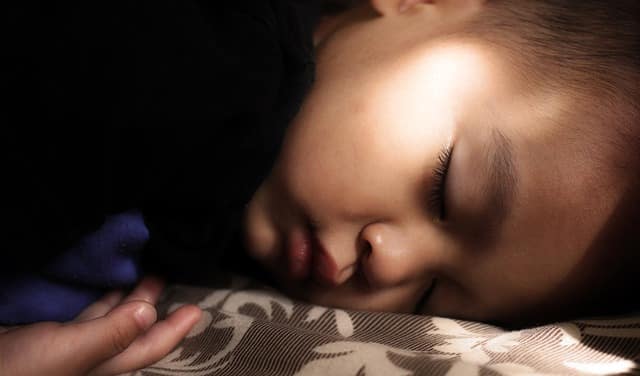Neel is six years old and snores loudly each night. His mother has noticed him gasp for air in between snores. He is restless through the night often waking up unrefreshed. His teachers have noticed him to be inattentive at school and irritable. Neel was referred to a paediatric sleep doctor diagnosed with Obstructive sleep apnoea (OSA).

What is obstructive sleep apnoea?
OSA is a condition that affects your child’s breathing in sleep. When we sleep, our muscles relax. This includes the muscles in the upper airway which can either partially or completely block the upper airway. Affected children snore, which can affect their sleep quality, behaviour and concentration during the day. Snoring is quite common, approximately 10% to 15% children snore regularly but only about 2% to 5% have obstructive sleep apnoea. When the breathing is disrupted during sleep, the body is left to choose between sleeping and breathing. As a result, the brain rouses sufficiently to restart breathing. Children (and adults) do not remember waking, but this arousal leads to poor sleep.

Obstructive sleep apnoea is diagnosed in children if they have obstructed breathing more than once every hour on a sleep study test. In my practice, I have come across children who have stopped breathing as many as 140 times every hour!
Snoring is quite common- approximately 10% to 15% children snore regularly but only about 2% to 5% have obstructive sleep apnoea.
The most common cause contributing to OSA in children is enlarged tonsils and adenoids. Tonsils are found on each side in the back of the throat. The adenoids are a patch of tissue that sit high in the throat, behind the nose, and are not easily seen through the mouth. In addition to large tonsils and adenoids, overweight children, children with abnormalities involving the lower jaw or tongue, conditions associated with low or weak muscle tone or neuromuscular deficits such as cerebral palsy, have a higher risk of developing sleep apnoea.

How do I know if my child has OSA?
There are many clues that your child may have sleep apnoea, for e.g. if your child does any of the following during sleep:
- Snoring
- Gasping, choking, or noisy breathing that may be worse when your child is on his or her back.
- Pauses in breathing sometimes with a gasp.
- Laboured breathing – Sucking in the skin above the collarbone, or between or below the ribs when sleeping.
- Mouth breathing.
- Restless and sweaty while asleep.
- Sleeps in unusual positions (seated position, arched back, head tilted back).
- Frequent awakenings from sleep.
- Bed-wetting, particularly if your child has not usually been wetting the bed at night.
What problems can occur with untreated OSA?
- Attention problems or poor performance in school.
- Hyperactivity and other behaviour problems.
- Personality changes such as being moody, cranky or irritable.
- Excessive sleepiness.
- Tiredness
- Overtime, OSA can increase your child’s risk of high blood pressure, heart disease and diabetes.
How is OSA diagnosed in a child?
The first step is a thorough history and examination to look for signs and symptoms of OSA by a paediatric sleep specialist. Sleep apnoea is usually diagnosed by doing a polysomnogram (a study done in a sleep laboratory at night). During this study, child’s breathing, oxygen levels, heartbeat, and electrical activity of the brain are recorded.
How is obstructive sleep apnoea treated in children?
For children who require treatment, the options might include:
- Adenotonsillectomy: Surgery to remove the tonsils and/or adenoids is the first line of treatment for most children with OSA. This is done by an ENT (Ear, Nose, Throat) surgeon and in most cases, the child will be discharged after an overnight stay in the hospital.
- Continuous Positive Airway Pressure (CPAP): CPAP is a device that applies air pressure to keep the airway open. It is advised for those children whose OSA cannot be corrected by surgery.
- Medications: Some medications such as a steroid nasal spray or medications for allergies may help.
- Weight loss: Weight loss might improve sleep apnoea. In my experience, appropriate treatment of sleep apnoea often improves weight management.
What do I do if my child has symptoms described in this article?
See your GP. Your GP will refer you to a paediatric sleep specialist.
Dr Vishal Saddi MBBS DCH FRACP is a paediatric Sleep and Respiratory specialist. He grew up in Mumbai, moved to Sydney in 2008 and got his Sleep and Respiratory training at the Children’s Hospital network in Sydney.






